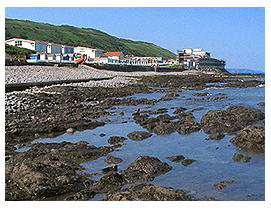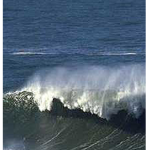Westward Ho! – is named after Charles Kingsley’s much loved book. Beginning in the fictional seaport of “Bideford Quay” near the real Bideford in North Devon during the reign of Elizabeth I, Westward Ho! follows the adventures of Amyas Leigh, an unruly child who as a young man follows Francis Drake to sea. Amyas loves local beauty Rose Salterne, as does nearly everyone else. Much of the novel involves the kidnap of Rose by a Spaniard. Amyas spends time in the Caribbean seeking gold, and eventually returns to England at the time of the Spanish Armada, finding his true love in the process. Westward Ho! is a haven for beach lovers – and golfers, too, who can enjoy a relaxing round at the Royal North Devon Course. More than two miles of golden sand backed by a unique pebble ridge linking to Northam Burrows Country Park, which is part of the UK’s only United Nations Biosphere Reserve.
Access is fairly easy down a concrete ramp from the town of Westward Ho! The beach is adjacent to the South West Coast Path and is well-located for visits to many other nearby attractions including the picturesque fishing village of Clovelly.


Clean Water at Westward Ho!
The Blue Flag is an exclusive eco-label awarded to over 3200 beaches and marinas in 37 countries across Europe, South Africa, Morocco, New Zealand, Canada and the Caribbean in the past year. The Blue Flag Programme is owned and run by the independent non-profit organisation Foundation for Environmental Education (FEE).
The Blue Flag works towards sustainable development at beaches/marinas through strict criteria dealing with water quality, environmental education and information, environmental management, and safety and other services. The Blue Flag Programme includes environmental education and information for the public, decision makers and tourism operators.
Pebble Beach Coves Galore
The North Devon Coastline is one of the most beautiful in the United Kingdom and the South West Coastal Path gives the visitor a chance to experience the unspoiled coastline using the extensive public footpath system along the shoreline.
Follow the signs and waymarks with the words ‘Coast Path’ and the acorn symbol, which is used by all National Trails. Signs at main access points will also show the distance to the next destination. Either walk ‘there and back’, use public transport in one direction or combine a section of Coast Path with inland footpaths to make a circular walk.
